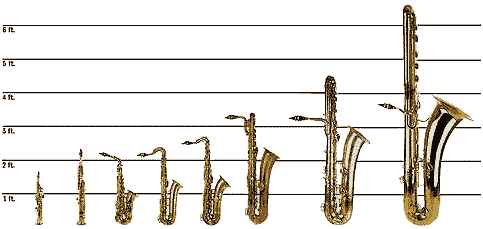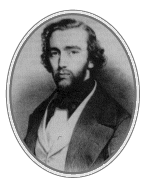The saxophone was invented by Antoine-Joseph (Adolphe) Sax. He was born in Dinant, Belgium on Nov. 6, 1814. Charles-Joseph Sax, his father, was a manufacturer who built a factory for woodwind and brass instruments. From his father he developed the technique and creativity needed for the trade. At Brussels Conservatory he studied flute and clarinet and soon developed his own ideas for improving the instruments. while refining the bass clarinet he began to form plans on building a new instrument. The instrument was a cross between the woodwinds and brass. It would be a bridge between the woodwind and brass sections that would blend not only with both sections, but also the strings. It was made of brass, yet had a mouthpiece and body similar to the clarinet.
In 1841, Adolphe first displayed his saxophone. Then in 1842, he moved to Paris in order to reach a broader audience. There he also began his own instrument making business. The saxophone was given its official 15-year patent in 1846. Adolphe's models for the saxophone included fourteen variations: E flat sopranimo, F sopranimo, B flat soprano, C soprano, E flat alto, F alto, B flat tenor, C tenor, E flat baritone, F baritone, B flat bass, C bass, E flat contrabass, and F contrabass. The E flat and B flat saxes were classified as military instruments. Saxes in F and C were concidered orchestral. The latter has become nearly obselete.
Sax knew he would have to make the saxophone more familiar in the music industry. A few classical composers became interested, among whom were Donizetti and Bizet. Some composers tried to write sax parts into their scores specifically for saxes, but a great majority of the classical musicians refused to take any part of the inventor's cause.
In 1845, the French government saw a lack in quality of its infantry music, and Adolphe saw this as an opportunity. Taking advantage of the situation, he recommended to the Minister of War that a contest between a band composed of only saxophoness and one of traditional military instruments be held. The band of saxes overwhelmed the audience, and from then on the saxes were adopted into the French military music where they helped to fill the lower and middle registers.
After the debut, Adlolphe was met with even heavier opposition. Sax maintained the small workshop in Paris and never made any great money. He didn't build large factories or mass produce the instruments. Hoping to nullify his patents, other instrument makers pressed lawsuits on him. They finally succeded in pushing him into poverty. He twice declared bankruptcy in 1856 and 1873, and it didn't stop there. The vicious Plotters went so far as to wreck and set fire to his workshop. For ten years he fought this battle, and when he was eighty years old, three composers, Emmanuek clabrier, Jules Massener, and Camile Saint-Saens, pettitioned the French Minister of Fine Arts to come to his aid. That very same year, still struggling with misfortune, Adolphe Sax died, but left behind him instruments that have changed the history of music in ways that we may never comprehend |

